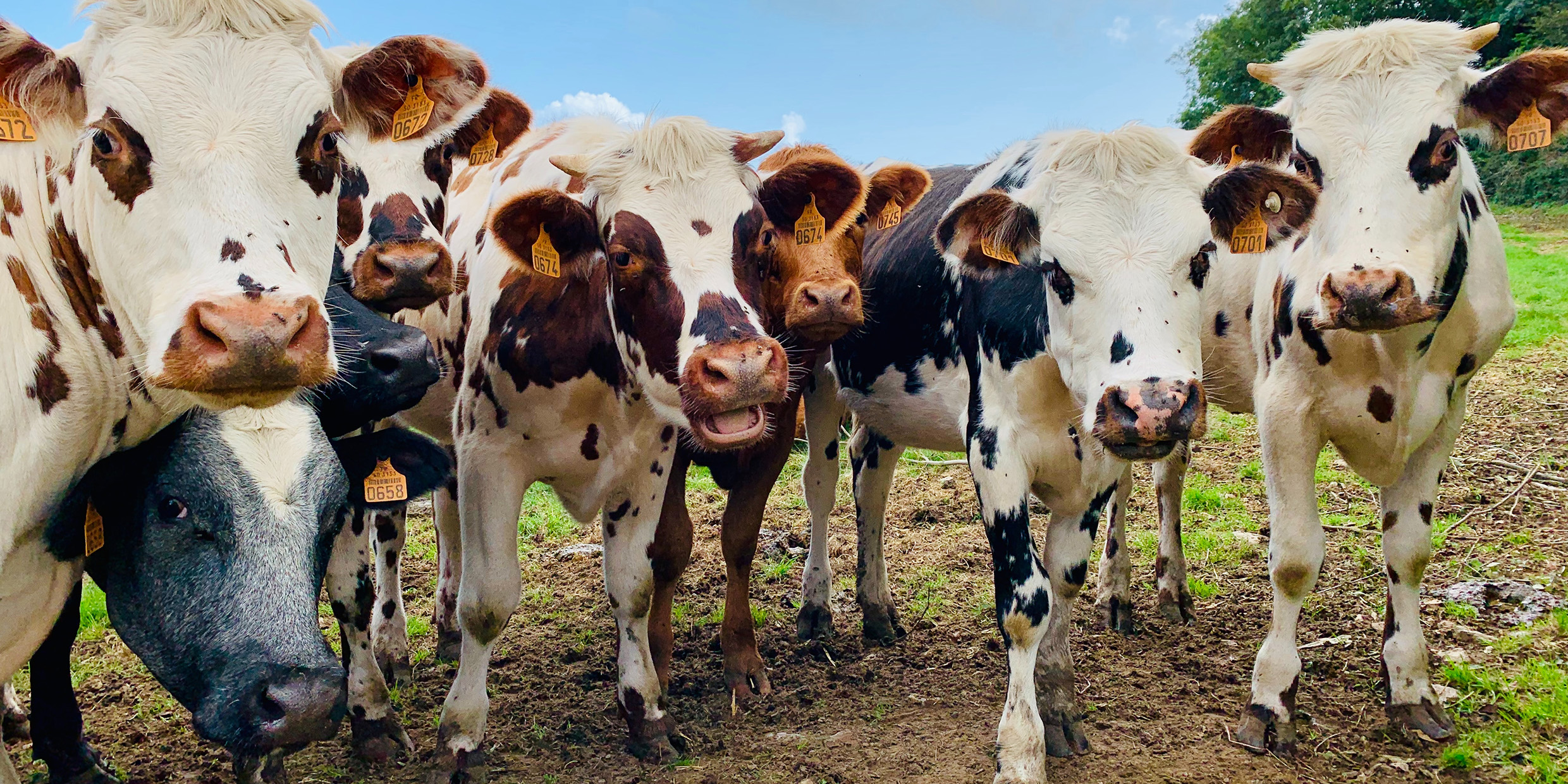Originally published 1 February 1993
Are you ready for this? Sperm sorting.
I’m not kidding. Scientists at a British company called Mastercalf, in collaboration with the United States Department of Agriculture, have devised a technique that enables them to separate sperm according to the gene which determines sex. These people are basically in the cattle business: Dairy farmers prefer female calves, and meat farmers prefer male calves. Artificial insemination with sorted sperm answers both needs.
In cattle, as in all mammals, X and Y chromosomes determine sex. All normal cells of a cow contain two X chromosomes, and an egg bears a single X. The cells of a bull contain both an X and a Y chromosome, and a sperm harbors one or the other. The sex of an embryo — XX or XY — depends upon which chromosome was carried by the sperm to the waiting egg.
So how to sort? Well, X chromosomes are larger than Y chromosomes; they contain 4 percent more DNA. The folks at Mastercalf treat the sperm with a fluorescent dye that sticks to DNA, then illuminate the sperm with a laser beam. An X‑bearing sperm glows more brightly than a Y‑bearing sperm. The luminous little wigglers are caused to stream single-file past a detector that gives them a positive or negative electric charge depending on their brightness. The sperm are then shot out of a device very much like the printing head of an ink-jet printer, and deflected one way or another according to their charge.
So far, the Mastercalf researchers are sorting sperm at a rate of about 100 per second. This is peanuts when you consider than a normal bull ejaculate contains upwards of 7 billion sperm, but adequate for in vitro fertilization. Farmers will soon be able to order up calves of predetermined sex.
What works for bulls and cows can in principle work for humans too. Surely, it won’t be long before a Japanese company packages the process in condom-like devices with built-in sorting mechanisms — blue devices for boy babies, pink for girls.
The Sony Sperm-jet.
All of which brings to mind the famous scene in Woody Allen’s Everything You Always Wanted To Know About Sex* (*But Were Afraid To Ask) in which actors dressed as sperm are lined up prior to ejaculation like paratroopers waiting to bail out of an airplane, including Woody nervously playing “Red River Valley” on a harmonica. Except this time add the Sperm-jet apparatus. Woody is doused with a bucket of dye, blasted with a laser, trotted past a photodetector, zapped with electric charge, and shot wide-eyed into the blue.
Only Allen in his comic prime could do justice to the work of the people from Mastercalf.
And why stop with the genes for sex? Scientists are rapidly mapping all parts of human DNA. In the not-too-distance future we’ll know where among the chromosomes to find the gene for eye-color, skin-pigment, innate intelligence, and God-knows-what-else. Fluorescent dyes will be developed that stick to specific segments of DNA, and sperm sorting can begin on a massive scale.
Would-be parents will avail themselves of commercial sperm-sorting services with access to large banks of donated sperm. These services would use the Sony Mastersperm-jet apparatus to customize offspring — at least insofar as the male contribution is concerned. Set a knob for blond, another for curly hair, another for 5 feet 9 inches. Slosh, flash, zap, zip — you get just the kid you want.
I can see it now. Fads in offspring will no longer be limited to names. One year we’ll have nothing but blond, blue-eyed, female cheerleader-types named Jennifer. The next year, it’ll be all male Michael Jackson look-alikes named Jason. Teachers of the next century will walk into classrooms in September to find thirty-five short, thin, red-headed boys with freckles and horn-rimmed glasses.
Woody, oh Woody, where are you now that we need you?
The mind reels at the possibilities. We’ve been reading lately about genes that predispose us towards divorce or violence, and genes that determine sexual orientation. The journal Science reported evidence of a gene for “niceness.” No kidding. A British psychologist administered questionnaires to the parents of 160 pairs of identical twins and 213 pairs of fraternal twins aged 5 to 16. Each child was rated for sociability and pro-social behavior. Both identical twins, who share genes and environment, were more likely to be nice than fraternal twins, who share environment only, suggesting that a predisposition towards niceness can be genetic.
Mind you, this sort of science is more appropriate for a Woody Allen movie than the prestigious pages of Science, but you can see what I’m getting at. The Sony Ultramastersperm-jet apparatus will have a setting for niceness.
And now, imagine this. Woody in his spermsuit, jogging with the other sperm through the dye-room of the apparatus, bobbing and weaving, trying desperately to avoid the dye for “nice.”



